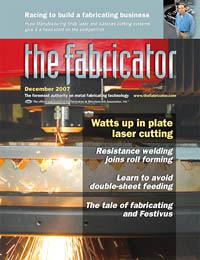Editor-in-Chief
- FMA
- The Fabricator
- FABTECH
- Canadian Metalworking
Categories
- Additive Manufacturing
- Aluminum Welding
- Arc Welding
- Assembly and Joining
- Automation and Robotics
- Bending and Forming
- Consumables
- Cutting and Weld Prep
- Electric Vehicles
- En Español
- Finishing
- Hydroforming
- Laser Cutting
- Laser Welding
- Machining
- Manufacturing Software
- Materials Handling
- Metals/Materials
- Oxyfuel Cutting
- Plasma Cutting
- Power Tools
- Punching and Other Holemaking
- Roll Forming
- Safety
- Sawing
- Shearing
- Shop Management
- Testing and Measuring
- Tube and Pipe Fabrication
- Tube and Pipe Production
- Waterjet Cutting
Industry Directory
Webcasts
Podcasts
FAB 40
Advertise
Subscribe
Account Login
Search
Festivus poles for the rest of us souls
No grievances for Milwaukee fabricator who turns aluminum poles into holiday fun
- By Dan Davis
- December 11, 2007
- Article
- Waterjet Cutting
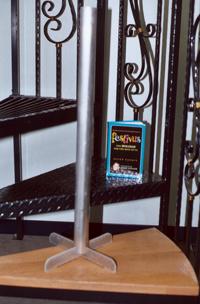
With a dull, lusterless finish, an aluminum pole becomes the symbol for this country's favorite non-holiday holiday—Festivus.
Not too many metal fabricators can say they are a supplier of not only metal product, but also a piece of pop culture. The Wagner Companies of Milwaukee can.
Thanks to the Frank Costanza character on "Seinfeld," thousands of fans still loyal to the show that was about nothing, company management with a sense of humor, and employees who rallied around a fun idea, The Wagner Companies. has staked out its position as the world's foremost producer of Festivus poles. Yes, it's the plain pole that Frank Costanza put up in his living room as a rebuke of Christmas' commercialism in a Seinfeld episode in 1997.
It's a pole made of aluminum, because of its "very high strength-to-weight ratio," as Costanza explained, and it's not polished because the pole is to be "unadorned and lusterless," unlike the heavily decorated trees with tinsel that Costanza found "distracting." And people can't get enough of them.
The company sold about 200 in 2005 and more than 2,500 in 2006 after the Associated Press published a story about the company's manufacturing effort. The company expects record-breaking sales heading into the Dec. 23 celebration date for Festivus.
"We never expected it to be a pet rock. We just thought we were going to have fun," said Tony Leto, Wagner's executive vice president of sales and marketing.
Railing Away
The Wagner Companies didn't build its business on fun; it built it on innovation.
Adolph A. Wagner joined his father's business, A.F. Wagner Iron Works, in 1923. The company fabricated structural steel, ornamental iron, wire work, and metal products for all types of buildings.
In 1955 Adolph Wagner, who developed the first hydraulically operated tractor loader, designed 40 products used in handrail fabrication. Those basic fittings became the main product line for R&B Wagner Inc. It was also the seed that has since given birth to more than 11,000 metal products found in The Wagner Companies architectural and industrial parts catalog. A 1997 acquisition of J.G. Braun Co. and its stock of ornamental railing products helped to round out the R&B Wagner product mix.
Leto said catalog sales represent about three-quarters of the company's total business. The rest comes from custom work, some for architectural projects and others through Wagner Industrial, which handles stamping, bending, cutting, and polishing service for industrial clients.
The Wagner Companies employs about 140 and owns 160,000 square feet of manufacturing space on Milwaukee's north side. It uses 27 presses, 15 rotary benders, two induction benders, two roll benders, saws, cutoff machines, polishing and finishing machines, welding equipment, and a waterjet to fabricate the catalog items and the custom jobs. The company also has a complete tool and die shop to keep the fabricating equipment up and running.
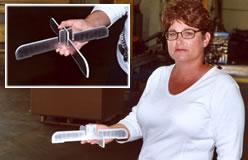
Connie Knaak, The Wagner Companies' production control manager, holds the aluminum base to the Festivus pole, which is comprised of two interlocking pieces that easily disconnect for shipping or storing.
The R&B of R&B Wagner still are involved in the day-to-day operations of the company as well. Robert A. Wagner is the company president, and Barbara Wagner Karol is the treasurer.
Having the company owners just down the hall helped to make the whole process of selling Festivus just a little easier for Leto.
Leto had read an article in The New York Times about how Festivus was being celebrated as a real holiday in some parts of the country. It hit him that the Festivus pole, the symbol of the anti-holiday holiday, could easily be made in the company's fab shop.
Ironically, Leto had once crossed paths with Jerry Seinfeld. In 1975 as students at Queens College in New York City, they both were in a Performance for Television class. Leto worked the camera; Seinfeld, not surprisingly, worked the room.
"So I came in and saw Bob Wagner and I said, 'What do you think? We could do Festivus poles, and we're not going to make any money on it, but we'll have a lot of fun and maybe we'll get some publicity.' He has a good sense of humor, and he said OK," Leto recalled.
At the close of 2004, The Wagner Companies bought itself a Christmas present—www.festivuspoles.com.
A Feat of Strength
Life soon got in the way of Festivus planning, and the URL remained "under construction" until October 2005. That's when Allen Salkin—the author of The New York Times article that had originally inspired Leto, released Festivus: A Holiday for the Rest of Us.
"I was at the bookstore and picked up the book," Leto said. "I came back to Bob and said, 'It's going to happen.' And he said, 'OK, do it.'"
The first engineering meeting was comical. Leto had to explain to the engineers that he wanted them to develop a base for a plain, 6-foot aluminum pole that was made up of 2-D parts, which would make it easier to ship. When he explained it was for Festivus, some in the room got it, and others just shook their head.
Cutting the poles was not a big deal. The shop floor cut tons of aluminum tubing, extruded aluminum alloy 6063-T6, to be exact. In fact, the Festivus pole would be made of 1.5-inch Schedule 40 pipe because that's the aluminum pipe size used in greatest amounts by the company.
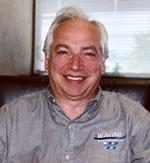
"We never expected it to be a pet rock. We just thought we were going to have fun." -Tony Leto, The Wagner Companies, on his company's Festivus poles
The engineers figured out they could use the company's new HammerHead™ waterjet from Calypso to cut the two parts of the base, which easily connect to create a four-legged stand. The base is made of aluminum alloy 3003 and is 0.19 in. thick.
It wasn't soon after the planning began that the Wagner team thought of their first product spinoff. A tabletop version, standing 2 ft. 10 in. tall, would be the perfect alternative to the 6-ft. version. Of course, it also helped that after cutting three 6-ft. lengths from stock aluminum tubing that a 2-ft. 10-in. drop remained.
The company knows a thing or two about polishing poles, but it was decided to keep the poles "unadorned and lusterless," as Costanza believed they should be. That's why some poles still have exposed die lines or might be shipped with the occasional scratch.
A virtual storefront, backed by The Wagner Companies' e-commerce software, was built at www.festivus poles.com, and a commercial Web site dedicated to selling the symbol of anticommercialism sentiment was ready to go.
"Within two weeks of when I picked up the book, we were online and had a product to sell," Leto said.
Oh, Ship! That's What Happens Next
Two days before Festivus, the Web site had 90,000 visitors. That translated into only 200 sales that first year, but the publicity was beginning to grow. Yahoo highlighted the story. College humor.com covered it.
"We didn't make a lot of money, but we had fun and got publicity," Leto said.
The publicity was building up to the holidays in 2006. The Web site had been up an entire year, and now the media was showing up in droves for the story. Television stations, magazines, newspapers, and Web sites wanted to tell the tale of the fabricator who saved Festivus.
Then the AP story hit on Dec. 22. Saturday, Dec. 23, was supposed to be the Christmas party, but it turned into a workday for some.
"The Web site at one point was getting 25 orders per minute. The orders were coming in extremely fast even though we couldn't deliver them [through regular postal channels]," Leto said. "People were actually placing orders and paying for next-day delivery on a Saturday. So they would pay $38 a pole and $100 for delivery."
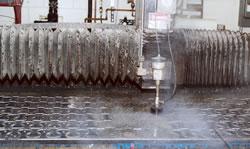
The Wagner Companies' waterjet cutting system is used to cut the base plates for the Festivus poles.
On that Saturday, Leto, the company president, the chief financial officer, and the chief operations officer packaged and shipped approximately 450 Festivus poles themselves.
"At the end of the day, I said to Bob, 'I kept my promise. We had fun and we got publicity," Leto added.
The fun should continue into the 2007 Festivus season. Wagner already was ahead of year-to-date sales as of the fall. That's a good sign that the company will blow away last season's 2,500 shipments.
When it comes to Festivus poles, The Wagner Companies is truly the master of that domain.
A Little More on Festivus
The Festivus celebration as defined by Frank Costanza involves more than just the Festivus pole. The celebration also encompasses two other major elements:
The airing of grievances. Each participant at the Festivus celebration lets the other participants know how they have been disappointments the past year. With that out of the way, it's time to eat.
The feats of strength. The head of the family tests his or her strength against another, who is elected by the other Festivus participants. (Anyone elected to face off against the head of the family can bypass the grappling session, but only if he or she has something better to do instead.) The celebration ends when the head of the family is pinned to the ground.
About the Author

Dan Davis
2135 Point Blvd.
Elgin, IL 60123
815-227-8281
Dan Davis is editor-in-chief of The Fabricator, the industry's most widely circulated metal fabricating magazine, and its sister publications, The Tube & Pipe Journal and The Welder. He has been with the publications since April 2002.
subscribe now

The Fabricator is North America's leading magazine for the metal forming and fabricating industry. The magazine delivers the news, technical articles, and case histories that enable fabricators to do their jobs more efficiently. The Fabricator has served the industry since 1970.
start your free subscription- Stay connected from anywhere

Easily access valuable industry resources now with full access to the digital edition of The Fabricator.

Easily access valuable industry resources now with full access to the digital edition of The Welder.

Easily access valuable industry resources now with full access to the digital edition of The Tube and Pipe Journal.
- Podcasting
- Podcast:
- The Fabricator Podcast
- Published:
- 04/16/2024
- Running Time:
- 63:29
In this episode of The Fabricator Podcast, Caleb Chamberlain, co-founder and CEO of OSH Cut, discusses his company’s...
- Trending Articles
How to set a press brake backgauge manually

Capturing, recording equipment inspection data for FMEA

Tips for creating sheet metal tubes with perforations

Are two heads better than one in fiber laser cutting?

Hypertherm Associates implements Rapyuta Robotics AMRs in warehouse

- Industry Events
16th Annual Safety Conference
- April 30 - May 1, 2024
- Elgin,
Pipe and Tube Conference
- May 21 - 22, 2024
- Omaha, NE
World-Class Roll Forming Workshop
- June 5 - 6, 2024
- Louisville, KY
Advanced Laser Application Workshop
- June 25 - 27, 2024
- Novi, MI
























